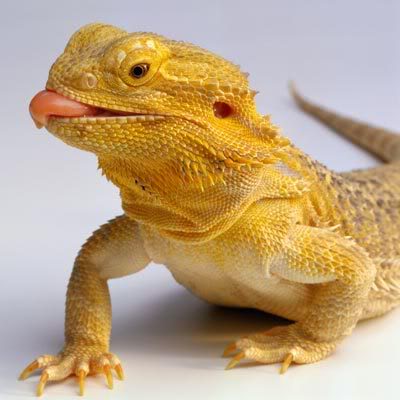The Ultimate Guide To Amazon Bearded Dragons: Beginner's Edition
The Amazon Bearded Dragon Guide
If you’re thinking of adding a pet to your family, a bearded dragon is a great option to consider. Though there are several species of bearded dragons, the Amazon bearded dragon (Pogona vitticeps) is one of the most popular ones that can be easily found. They are friendly, relatively easy to care for, and make great pets for both families and individuals.
What is an Amazon Bearded Dragon?
The Amazon bearded dragon, also known as the Central or Inland bearded dragon, is native to the deserts and woodlands of central Australia. These docile lizards, ranging in length from 16-24 inches, have a spiny beard-like structure under their chin which they can puff up when threatened, startled, or trying to attract a mate. This is where they get their name ‘bearded’ dragon.

Habitat and Environment
In the wild, Amazon bearded dragons live solitary lives and can be found on trees, rocks, and cliffs. They are adaptable to various landscapes such as arid, semi-arid, and rocky terrain. Their ideal habitat in captivity should be as close to their natural habitat as possible, as this will make them feel more comfortable and at home.
The enclosure for an Amazon bearded dragon needs to be large enough for them to move easily and feel comfortable in it. According to experts, the enclosure should be at least 75 gallons for one adult bearded dragon with enough height to allow the lizard to climb around.

A suitable enclosure should include a basking area, a hiding area, and a shelter where they can retreat to when feeling threatened or stressed. The basking area requires a heat source, such as a heat lamp, to replicate the warmth of the sun. A UVB light is also essential for an Amazon bearded dragon’s health, as it helps supplement their Vitamin D3.
Diet and Feeding
Feeding an Amazon bearded dragon requires a balance of live insects or invertebrates, and vegetables or fruits. A good rule of thumb is to make sure that around 80% of your bearded dragon’s diet should be made up of fresh vegetables and fruits, while the remaining 20% should be insects.

Insects such as crickets, mealworms, roaches, and hornworms are a good source of protein for bearded dragons. It is also essential to feed them gut-loaded insects. That means insects that have had a nutritious, balanced diet themselves, so when your bearded dragon eats them, they get all the necessary nutrients.
Bonding and Handling

Bearded dragons are naturally very docile creatures and are typically safe to handle once they’ve settled into their new environment. While they might be a little nervous at first, they will generally warm up to their owners quickly. It’s a great idea to spend time with your bearded dragon every day to create a bond between you and your pet.
It’s best to approach your bearded dragon from the front rather than from above, as this is less threatening. Gently scoop up your lizard with both hands, avoiding any sudden movements. Once you’ve got a hold on them, support their entire body while holding them close to your chest.
Conclusion
When you bring home an Amazon bearded dragon, you’re bringing home a new friend. Show them love and care, and they will become a loyal companion for years to come. You can find several options for Amazon bearded dragons on Amazon, where you can buy them online and delivered to your doorstep.
